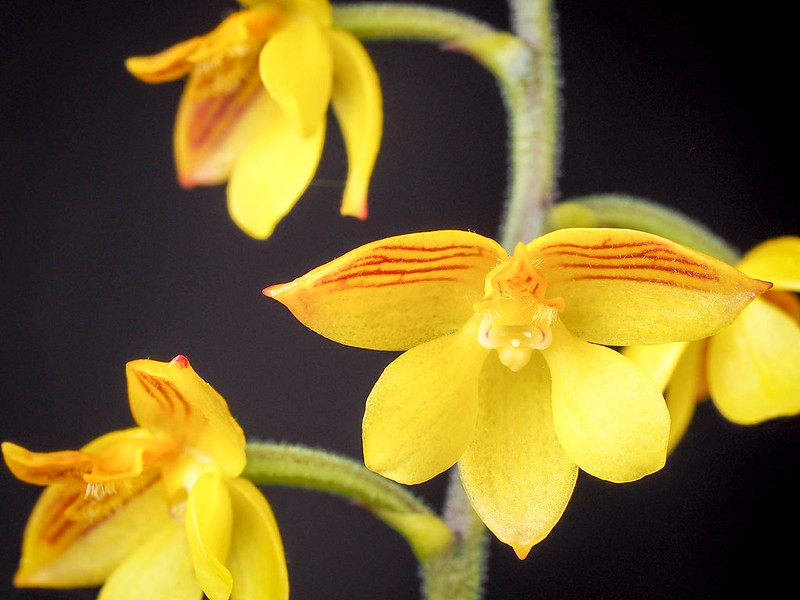
Polystachya pubescens is a compact and cheerful species from South Africa, Swaziland and Eastern Zimbabwe (link to a distribution map). While it is common species in South Africa, it is either rare or extinct in Zimbabwe (Flora of Zimbabwe). In South Africa, it occurs in Eastern Cape, KwaZulu-Natal, Limpopo, Mpumalanga according to this South African Biodiversity Institute (SANBI) site. This is the summer rain fall region, and the plants experience a prolonged dry season during the cooler winter months (Stewart and Hennessy 1981).
The genus Polystachya is a moderately large genus with approximately 250 species. It belongs to the subtribe Polystachyinae, which is a part of the tribe Vandeae, containing Angraecum and Aerangis in addition to Vanda, Aerides, Phalaenopsis, Thrixspermum etc. This genus is somewhat unique since it shows pan-tropical distribution (i.e. occurs in the tropics of Africa, Asia, and Americas). Within Orchid families with many genera, there are only 11 genera which are distributed pan-tropically; Bulbophyllum, Calanthe, Corymborkis, Epipactis, Eulophia, Goodyera, Habenaria, Liparis, Malaxis, Polystachya, and Vanilla. (Russell 2010, p.17). If you include naturalized species in the Americas, we can add two more, Phaius and Zeuxine. Other non-tropic (i.e. temperate) orchids with world-wide distributions include Dactylorhiza, Neottia, Platanthera, and Spiranthes.
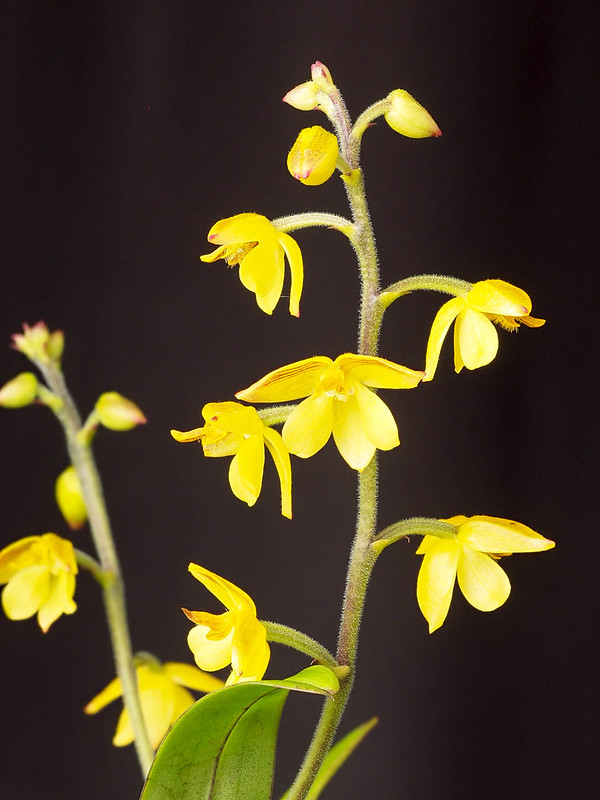
Some of the species in Polystachya have small flowers, but P. pubescens has showy, attractive, brightly colored flowers. The natural spread of the flower is 2cm. The height of my plant is about 13 cm (pseudobulb + leaf) at this moment and even with the flower shoot, it is about 22 cm. So it is a fairly compact species. A description and a nice color illustration can be found in Hooker (1866)
As a side note, this species has been used as a protective/love charm by Zulu people (Hutchings 1996, Chinsamy et al. 2011).
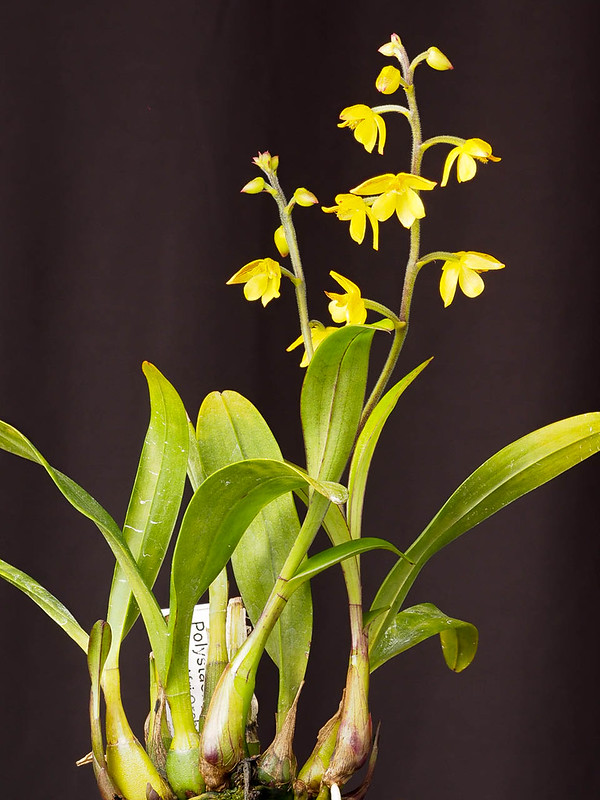
About one third of orchid species possesses deceptive pollination mechanisms where no rewards are provided to the pollinators (Ackerman 1984). However, many species of Polystachya appear to give rewards in the form of pseudo-pollen/food hair on the lip. Inside of pseudo-pollen/food hair, Polystachya species provide protein, starch, and/or lipids. Different species provides different combination of these nutritional rewards. The hair on the lip of P. pubescens is potentially a reward and the main nutrient in the hair appears to be proteins (Davies et al. 2002). While we know that the hairs are rich in proteins, we do not know if the pollinators are attracted to it since the pollination system of this species isn't studied well.
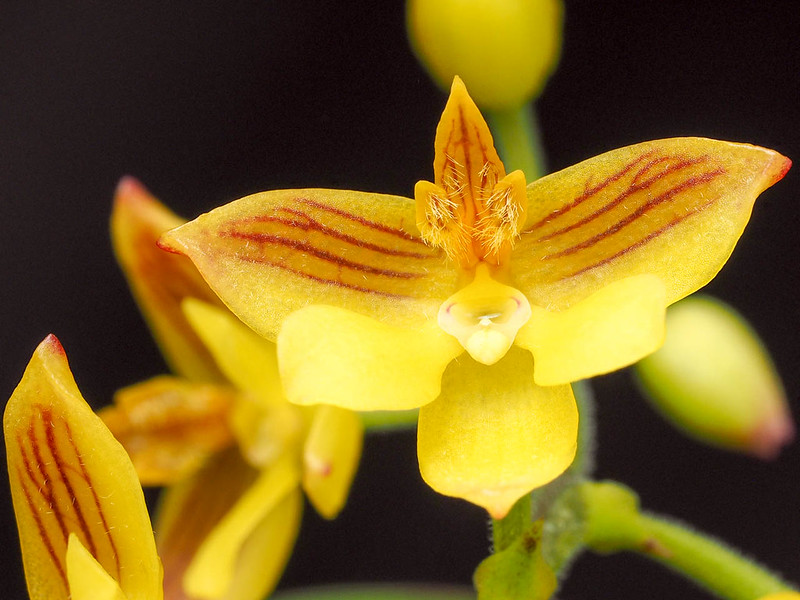
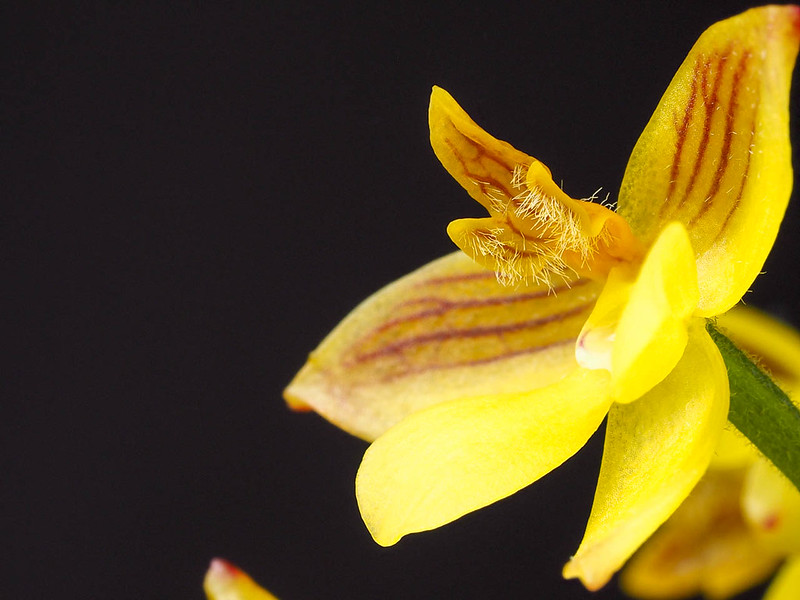
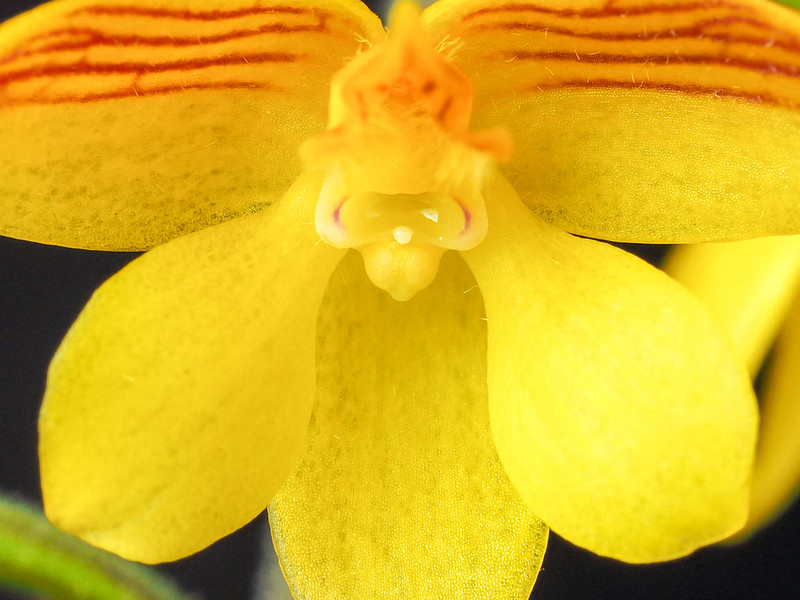
I got this plant from Lourens & Jolisa Grobler of Afri Orchids when I visited Redland International Orchid Festival in 2016. I have been growing it in cool end of intermediate temperature: daily maximum/minimum temperature of 29/18C (85/65F) in the summer, 21/13C (70/55F) in the winter. The current potting media is medium fir bark: sphagnum moss = 3:1 in volume.
Literature Cited:
- Ackerman, J. D. 1984. Pollination of tropical and temperate orchids. In: Tan, K.W., ed. Proceedings of the Eleventh World Orchid Conference. Miami, Florida: American Orchid Society, 98-101.
- Chinsamy, M., Finnie, J. F., & Van Staden, J. (2011). The ethnobotany of South African medicinal orchids. South African Journal of Botany, 77(1), 2-9. (link)
- Davies, K.L., Roberts, D.L. and Turner, M.P., 2002. Pseudopollen and food‐hair diversity in Polystachya Hook.(Orchidaceae). Annals of Botany, 90 (4): 477-484. (link to full text)
- Hutchings, A., A.H. Scott, G. Lewis, A.B. Cunningham, 1996. Zulu Medicinal Plants: An Inventory, Natal University Press, Pietermaritzburg
- Hooker, W. J. 1866. Polystachya pubescens - Hairy stemmed Polystachya. Curtis's Botanical Magazine 92: Plate 5586 (link to Google Book)
- Russell, A. 2010. Molecular phylogeny, genome evolution and biogeography of Polystachya (Orchidaceae). Ph. D Dissertation, Universität Wien. (link to PDF)
- Stewart, J. and E. F. Hennessy, 1981. Orchids of Africa: A Select Review. Houghton Mifflin Company, Boston. Plate 43 (p.132-133) (link to Google Book)
I live in Durban within the area of the natural distribution of Polystachya pubescens. I find that they grow best in a pot filled with sandstone or granite pebbles or crushed stone used for making concrete
ReplyDeleteThank you for the information. So does it grow in rock outcrop in the nature?
Delete